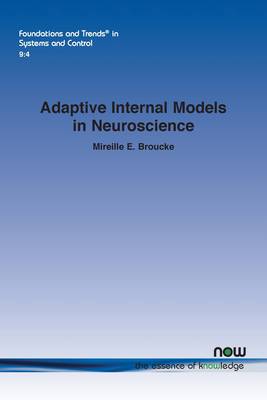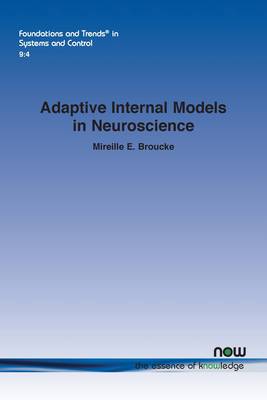
- Afhalen na 1 uur in een winkel met voorraad
- Gratis thuislevering in België vanaf € 30
- Ruim aanbod met 7 miljoen producten
- Afhalen na 1 uur in een winkel met voorraad
- Gratis thuislevering in België vanaf € 30
- Ruim aanbod met 7 miljoen producten
Zoeken
Omschrijving
One of the open questions in neuroscience is the function of the cerebellum, a major brain region involved in regulation of the motor systems, speech, emotion, and other cognitive functions of the body. In this monograph the author makes and tests a hypothesis that the primary function of the cerebellum is disturbance rejection of exogenous reference and disturbance signals. In achieving this goal, the author provides a brief historical overview of computational theories of cerebellar function and of the relevant parts of control theory in the area of regulator theory, and then presents a chronological review of subjects in control theory related to the hypothesis. The author begins with classical regulator theory and highlight some aspects that are not suited to the modeling of the cerebellum. Then adaptive control theory is reviewed in terms of error models. To test the hypothesis on cerebellar function, the author applies adaptive internal model designs to several motor systems regulated by the cerebellum. These include the slow eye movement systems: the vestibulo-ocular reflex, gaze holding, smooth pursuit, and the optokinetic system. Finally, discrete time behaviors regulated by the cerebellum are investigated. In all, this monograph provides a unifying framework to explain how the cerebellum can contribute to so many different systems in the body. This monograph is an important comprehensive study of modeling the cerebellum using control theory techniques. It will be of interest to neuroscientists and control theorists working on understanding the function of the human brain.
Specificaties
Betrokkenen
- Auteur(s):
- Uitgeverij:
Inhoud
- Aantal bladzijden:
- 204
- Taal:
- Engels
- Reeks:
Eigenschappen
- Productcode (EAN):
- 9781680839401
- Verschijningsdatum:
- 31/05/2022
- Uitvoering:
- Paperback
- Formaat:
- Trade paperback (VS)
- Afmetingen:
- 156 mm x 234 mm
- Gewicht:
- 290 g

Alleen bij Standaard Boekhandel
+ 220 punten op je klantenkaart van Standaard Boekhandel
Beoordelingen
We publiceren alleen reviews die voldoen aan de voorwaarden voor reviews. Bekijk onze voorwaarden voor reviews.











